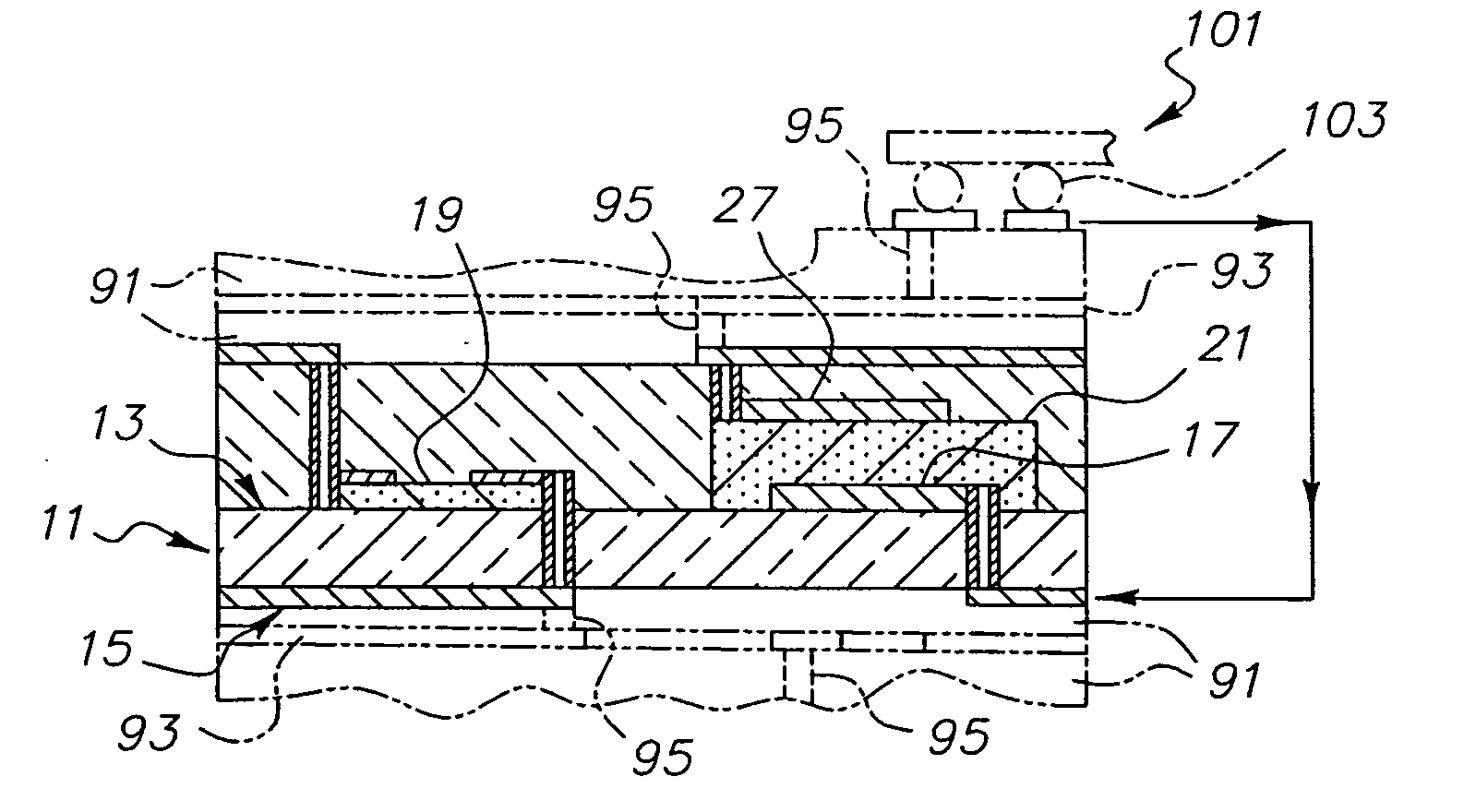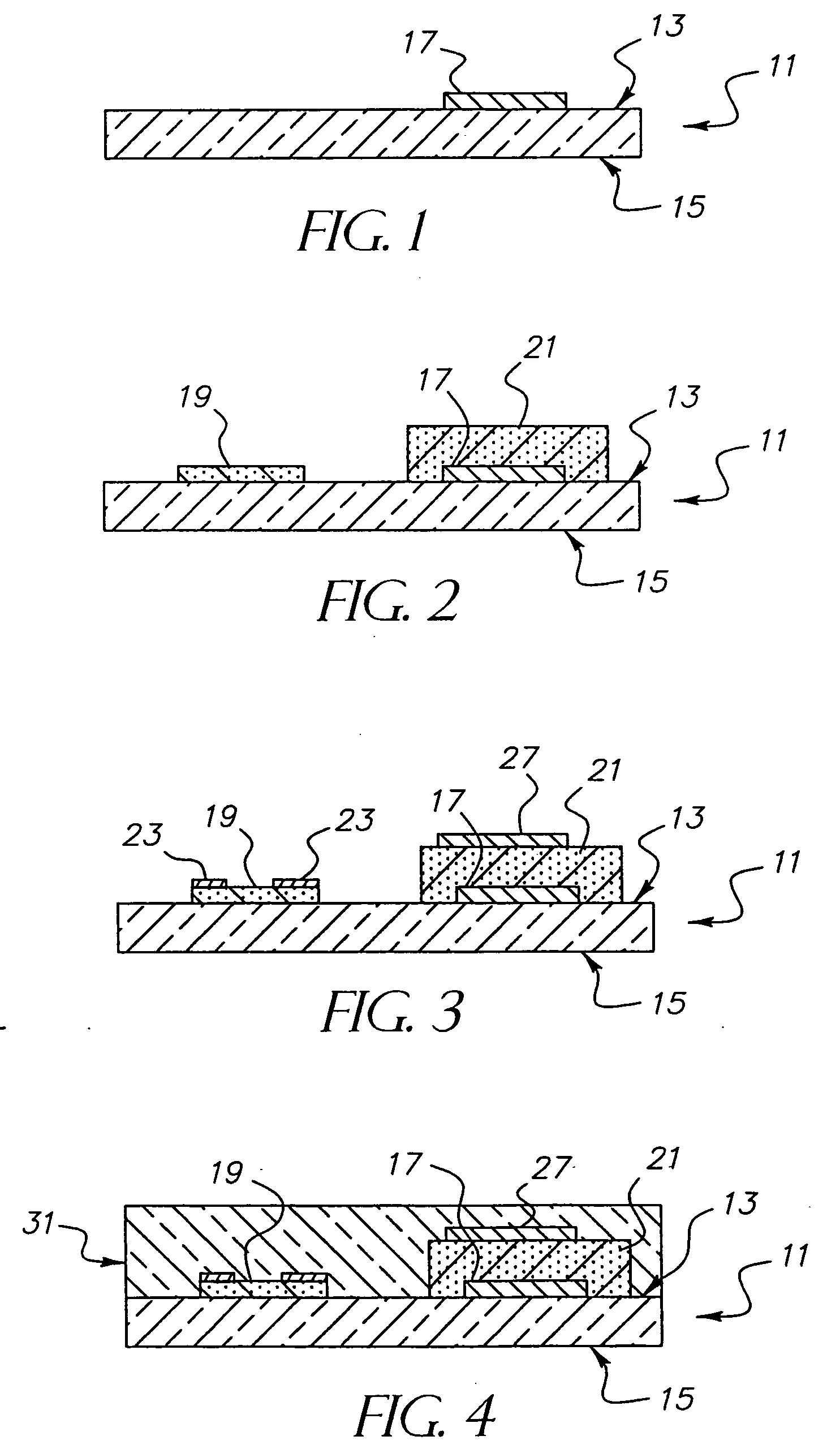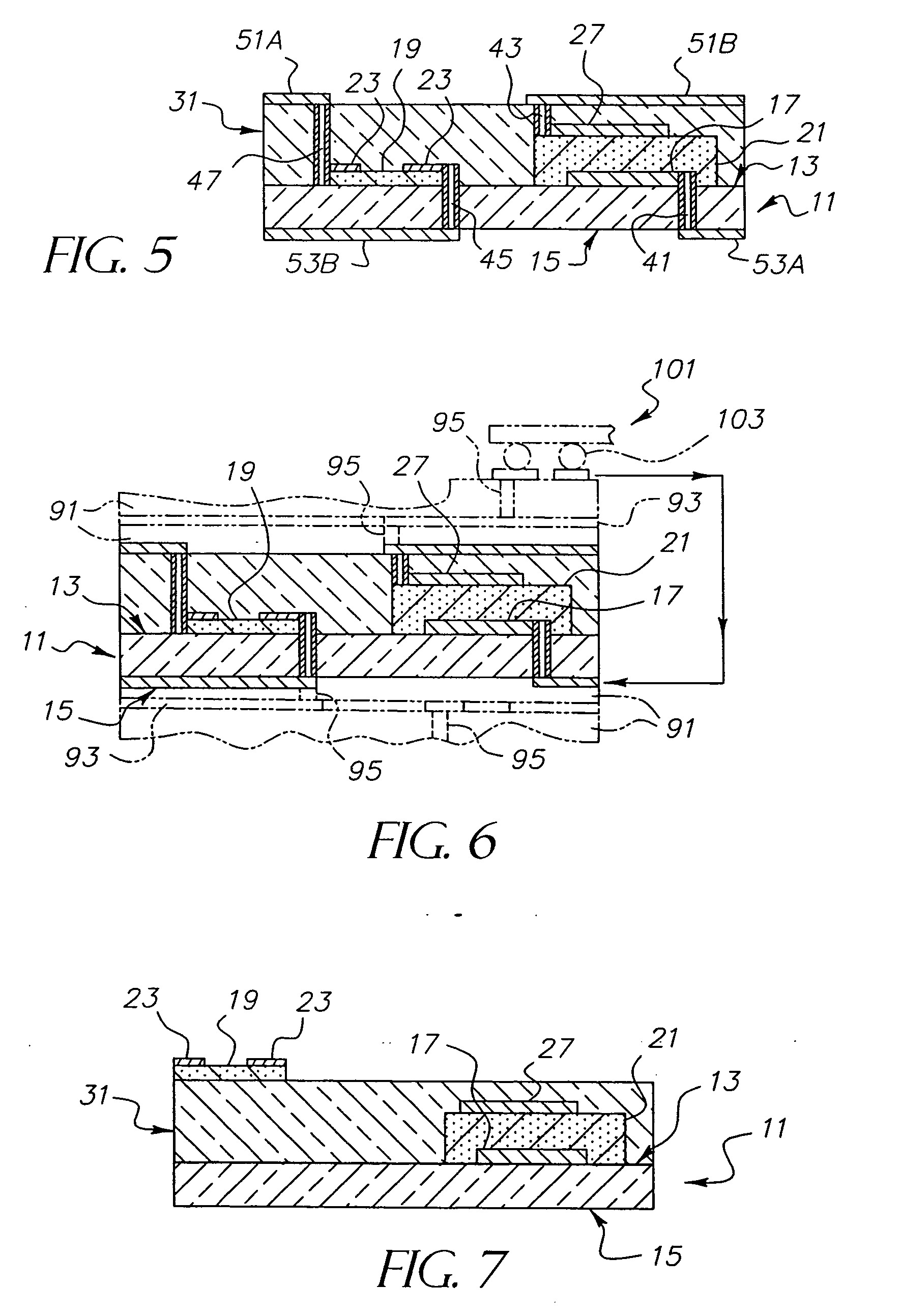Capacitive substrate and method of making same
a capacitor and substrate technology, applied in the field of capacitor forming methods, can solve the problems of adversely affecting electrical properties, inability to afford the external surface area real estate savings of pcb, and films produced using these powders are limited to thicknesses greater than the size, so as to enhance the circuitized substrate art
- Summary
- Abstract
- Description
- Claims
- Application Information
AI Technical Summary
Benefits of technology
Problems solved by technology
Method used
Image
Examples
example one
[0068]BaTiO3-thin films were prepared from a 0.5 molar aqueous acetate solution of Ba(CH3COO)2 and Ti(OC2H5)4. The films were deposited on glass substrates and dried successively at 150° and 450° C. to remove all the organics. The films were then laser annealed at various fluences (energy densities) for one to 300 pulses per area. Additional post annealing (600° C. in air) was used to generate different crystalline phases in the laser-annealed spots. A second electrical conductor was then formed using a sputtering operation atop the cured film using a mask normally used for such sputtering operations. The resulting capacitance density of the formed capacitor measured about 3000-5000 pico-Farads(pF) / square millimeter at one Mega-Hertz (MHz). The following Table illustrates how a change of capacitance will occur with such laser anneal
TABLECapacitanceLaser annealingPost annealing(pF / mm2)Blank600 degree C. for10001 hour250 mJ / cm2 for 50600 degree C. for3000pulses1 hour370 mJ / cm2 for 506...
example two
[0069]BaTiO3 powders (40 grams) were mixed with a solution containing two grams of n-phenylaminopropyltrimethoxy silane, ethanol (95 ml) and water (5 ml). The white suspension formed was ultrasonicated for five minutes and then stirred at 70° C. for one hour. The product was collected by centrifugation, washed with ethanol (120 ml×2) and vacuum dried. Epoxy based nanocomposites were prepared by mixing appropriate amounts of the organically modified BaTiO3 powder, bisphenol A epoxy resin (Mn˜377), dicyandiamide, and 2-methylimidazole in methylpyrrolidone (NMP). The mixture was stirred and ultrasonicated for five minutes to homogenize the dispersion of BaTiO3. Composite thin films were deposited on Cu substrates, which served as the bottom electrode. The films were first dried at 75° C. for one hour followed by curing in a vacuum oven at 170° C. for fifteen hours. The films were then laser annealed at fluences (energy densities) 50-100 mille Jules (mJ) / square centimeter for one to 300...
example three
[0070]38.5 grams of an epoxy novolac resin (sold under the product name “LZ 8213” from Huntsman, Salt Lake City, Utah), containing about 35 wt % methyl ethyl ketone and 6.5 gm of a phenoxy resin (sold under the product name “PKHC” from Phenoxy Associates, Rock Hill, S.C.), containing 50 wt % methyl ethyl ketone, were mixed together with 100 gm of barium titanate (BaTiO3) powder (available from Cabot Corporation, Boyertown, Pa.), the barium titanate including fifty grams with a mean particle size of 0.065 micron and surface area of about 16 m2 / gm, and fifty grams with a mean particle size of 0.12 micron and surface area of about 8.2 m2 / gm. This mixture was mixed with thirteen grams of propylene glycol methyl ether acetate and twelve grams of methyl ethyl ketone and ball milled for three days. A thin film (about 2.5 microns thick) of this mixed composite was then deposited on a copper substrate and dried at approximately 140° C. for three minutes in an oven to remove residual organic ...
PUM
| Property | Measurement | Unit |
|---|---|---|
| temperature | aaaaa | aaaaa |
| temperature | aaaaa | aaaaa |
| surface area | aaaaa | aaaaa |
Abstract
Description
Claims
Application Information
 Login to View More
Login to View More - R&D
- Intellectual Property
- Life Sciences
- Materials
- Tech Scout
- Unparalleled Data Quality
- Higher Quality Content
- 60% Fewer Hallucinations
Browse by: Latest US Patents, China's latest patents, Technical Efficacy Thesaurus, Application Domain, Technology Topic, Popular Technical Reports.
© 2025 PatSnap. All rights reserved.Legal|Privacy policy|Modern Slavery Act Transparency Statement|Sitemap|About US| Contact US: help@patsnap.com



